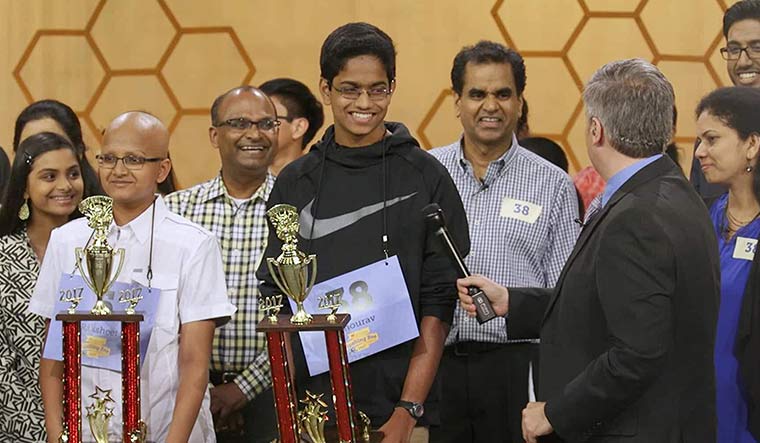For more than a decade now, Indian-Americans have been dominating a time-honoured white American tradition. Twenty-six of the last 31 winners of the prestigious Scripps National Spelling Bee—a televised annual contest in which whiz-kids from across America take on the dictionary—have been from the community that makes up just 1 per cent of the US population.
“Something clearly is going on here that needs to be better understood,” says the narrator of the new Netflix documentary Spelling the Dream. Sadly, Netflix is not in the ‘understanding issues’ business; it is in the content-packaging business.
Spelling the Dream, therefore, is just another sleek specimen of the sports-drama genre. The documentary is crammed with information, but never demands your full attention; it features fascinating people, but they are portrayed as instantly forgettable characters; its workman-like filmmaking culminates in the kind of stirring denouement that is customary for the genre, but it leaves you empty and unsatisfied.
There is, however, much to relish if you are a desi culture warrior. The documentary has approving voiceovers of how India’s civilisation and ethos foster a flair for languages; and montages that show white, black and Latino children struggling to spell words as simple as capsule, while Indian-Americans romp home with ‘echolalia’ and ‘scilicet’. Netflix is so focused on making Indians happy that it even shows India’s map with China- and Pakistan-occupied parts of Kashmir as undisputed Indian territory—a first for a foreign production like this.
But, why is Netflix risking a controversy? Perhaps the streaming giant knows that Spelling the Dream would be streamed only by Indians. Given this cynical audience targeting, how can you expect Spelling the Dream to capture what modern bee-movie classics like Akeelah and the Bee (2006) and Oscar-nominated documentary Spellbound (2002) did?
The best sports movies are often a nod to the power of the collective, but the Netflix documentary focuses too much on the struggle of individuals. Its storytelling form is the very antithesis of the spirit of the bee and its etymology. (The word has its roots in the medieval community get-togethers where people helped each other with their work—as in quilting bee or apple bee.) Instead, we get moments such as where the taciturn parents of an Indian-American prodigy talk about their secret database of words that will help their son win. “We are sharing this database only because this is our last year, and so far we have kept this as a family trade secret, and that gives [our son] a competitive advantage,” says the father proudly.
Most Indian-American parents in the film come across as fiercely competent and selfish, with insular views of what they owe to their adopted country. “The goal for [my son] would be to be a good citizen,” says one father. “So, whatever he does, whatever he learns, it should benefit the community, the country, the world. Something like Microsoft, for example.”
It is annoying that the filmmakers paint this hackneyed picture at a time when Indian-Americans are making their presence felt in almost every sphere of American life, and not just in technology and medicine. “Something is clearly going on” indeed with Indian-Americans, but this incredibly lazy film about incredibly hardworking children proves that Netflix does not quite get it.
Spelling the Dream
Available on Netflix
Rating: 2/5


